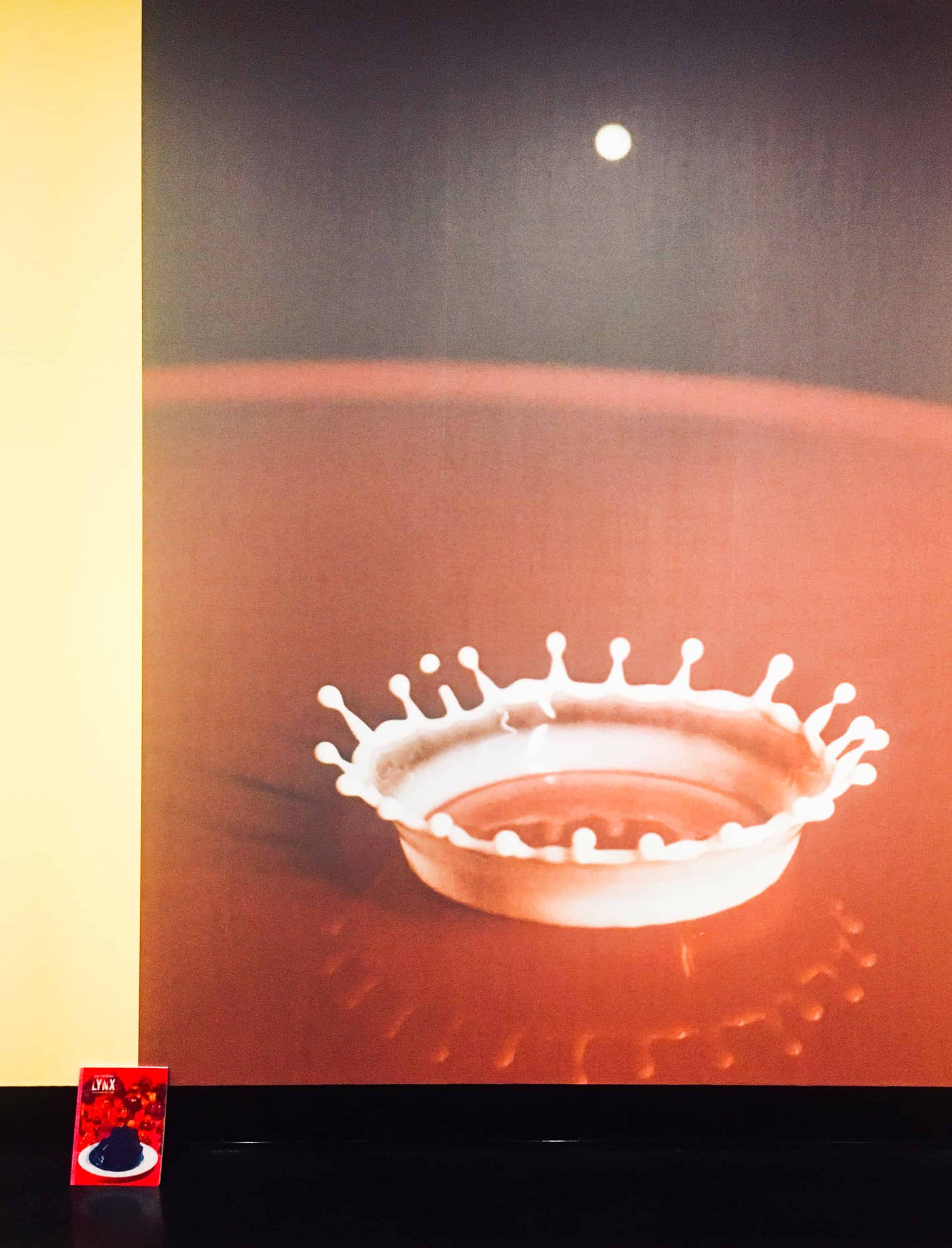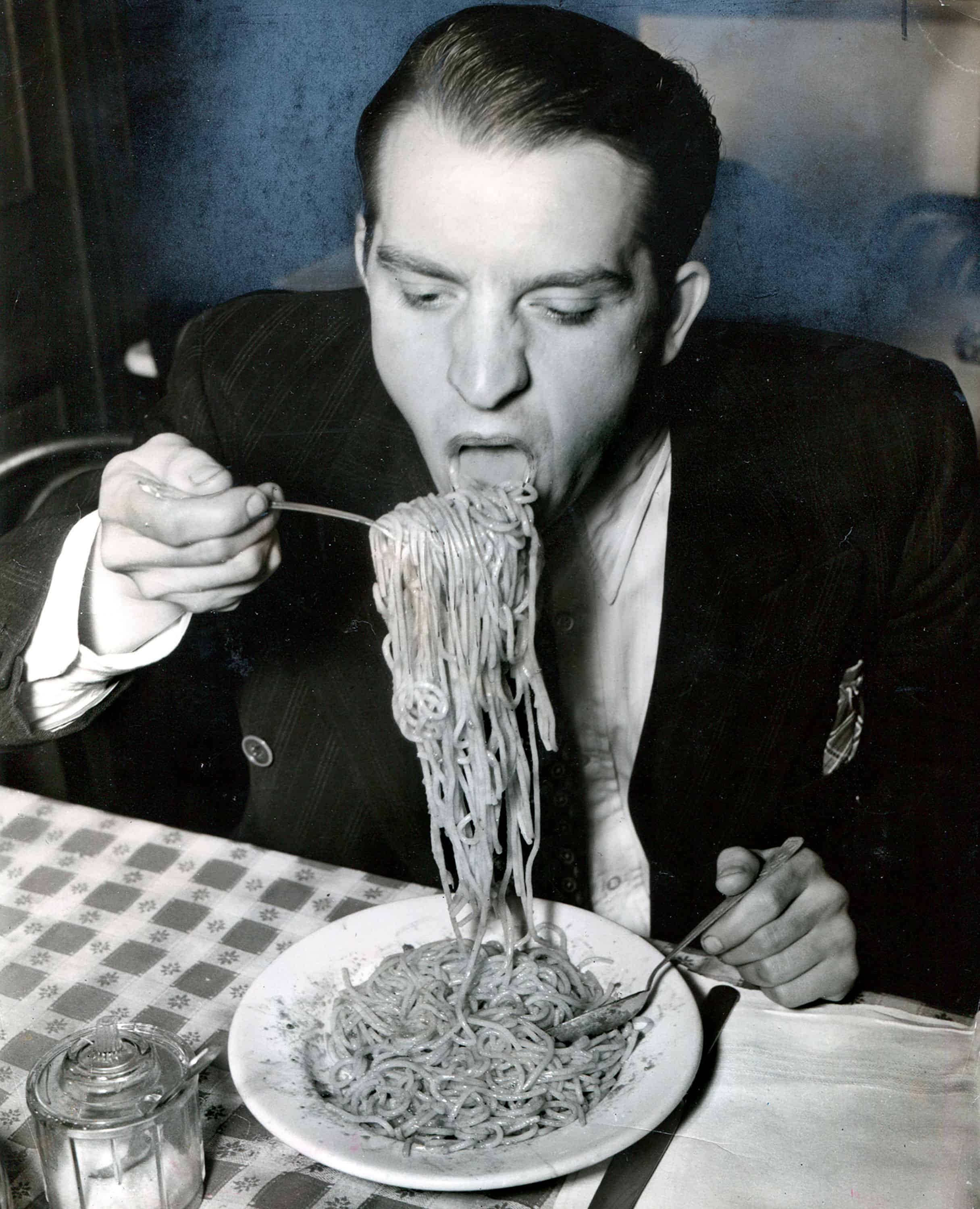Food photography can raise fundamental questions about a wide variety of societal themes: family, tradition, home life, wealth, poverty, gender, race, disgust, satisfaction, and consumption.
The exhibition Food for the Eyes at C/O Berlin presents the varied history of food in photography. The show includes Swiss artist duo Fischli and Weiss’s legendary Sausage Series, showing hot dogs, German sausages, parsley, and pickles arranged as props in a grotesquely absurd scene; fashion photographer Irving Penn’s similarly iconic frozen fruit and vegetable sculptures and his numerous artful still lifes; and British Magnum photographer Martin Parr’s images of bright fairy cakes, tea, and beans on toast, all instantly recognizable as typically “British.” The show also presents works by Cindy Sherman and Martha Rosler that disrupt the traditionally domestic role of the woman in the kitchen.
With works from fine art, fashion photography, journalistic stories, and advertisements, the exhibition offers a comprehensive overview of the depiction of food in photography through three themes. Still Life explores one of the most firmly established artistic traditions and asks the questions: How have photographers reinterpreted and subverted what was originally a genre of painting? What has changed—which new forms have developed over the course of time? Around the Table examines the ritual and sense of community that forms when food is shared, as well as the values and cultural identity they reflect. Playing with Food explores how the playful use of food can present new meanings and call us to both question and laugh at society’s traditions.
Martin Parr, Weston-Super-Mare, England, 1998, Archival Pigment Print © Martin Parr/Magnum Photos
Peter Fischli and David Weiss, At the Carpet Shop, 1979; from Wurst Series (Sausage Series) © Peter Fischli and David Weiss, Zurich 2018. Courtesy Sprüth Magers, Berlin, Matthew Marks Gallery, New York and Galerie Eva Presenhuber, Zurich
Weegee, [Phillip J. Stazzone is on WPA and enjoys his favorite food as he’s heard that the Army doesn’t go in very strong for serving spaghetti.], 1940, Gelatin-Silver Print © Weegee/International Center of Photography . Courtesy Ira and Suzanne Richer
Food for the Eyes: The Story of Food in Photography, exhibition, photo: Vice Versa
Food for the Eyes: The Story of Food in Photography, exhibition, photo: Vice Versa
Food for the Eyes: The Story of Food in Photography, exhibition, photo: Vice Versa
Food for the Eyes – The Story of Food in Photography
On view until 7 September 2019
C/O Berlin Foundation, Amerika Haus, Hardenbergstraße 22–24, 10623 Berlin
Weegee, Phillip J. Stazzone is on WPA and enjoys his favorite food as he’s heard that the Army doesn’t go in very strong for serving spaghetti, 1940, Gelatin-Silver Print © Weegee/International Center of Photography. Courtesy Ira and Suzanne Richer














